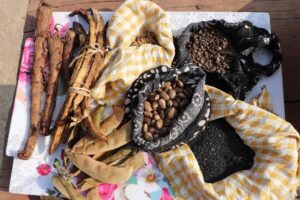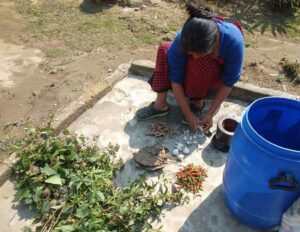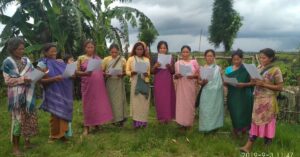Originally published in National Geographic
ORIENTE REGION, ECUADOR Pushed forward by a chugging long-tail motor, an old dugout canoe carries us down the languorous Conambo River, a tributary of the Amazon, at the western edge of Ecuador’s Oriente region. We spend the day on the river, sometimes baking in the sun, other times getting drenched by cloudbursts of rain.
We are followed by a screeching pandemonium of scarlet and green-winged macaws, chased by flocks of prattling parakeets, monitored by stealthy guans, and surveyed by the occasional toucan. A harpy eagle swoops above us, looking for its lunch, most likely a woolly or howler monkey that we have heard chattering and whooping in the canopy.
Once in a while, our skipper pulls the boat up along a shady bank to snag some barbudo, a foot-long catfish, for dinner. Every time he lands one—the fish’s long barbels wriggling like giant earthworms—he expertly slaps his catch on the side of the boat, snapping off its spiky dorsal and pectoral fins to avoid getting stabbed by its sharp barbs.
In the afternoon, we come ashore to explore a large oxbow lake—a meander that got cut off from the main channel of the river. As we examine the birdlike tapir tracks imprinted in the bank, a large freshwater stingray glides past us through the murky waters. Back in the boat, our guide shares a foot-long, thumb-thick guaba seedpod called “ice-cream beans” for the sweet vanilla flavor of the cotton candy-like white pulp surrounding the large black beans. Sucking on the sweet flesh, I watch a giant blue morpho butterfly flicker in and out of the deep jade shadows of the rain forest.
We are in one of the most biodiverse places on Earth—the Napo moist tropical forest in northeastern Ecuador, made famous by Yasuni National Park. According to Kelly Swing, the director of the Tiputini Biodiversity Station, there are about 600 species of birds, 200 species of mammals, 500 species of fish, and 150 species of frogs in the park. “One hectare of Yasuni forest may contain up to 600 species of trees and over 100,000 species of insects,” says Swing. “Microbial diversity is overwhelming.”
Continue reading at https://www.nationalgeographic.com/environment/2018/11/can-indigenous-land-stewardship-protect-biodiversity-/



